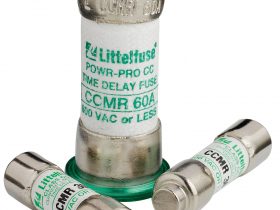No, really — who is to say? Where is such entity defined or described? The answer could be found in two following documents:
- In the CSA standard Z32, which is actually called Electrical safety and essential electrical systems in health care facilities; and
- In Section 24 of the Canadian Electrical Code which covers installation of electrical equipment in patient care areas.
Photo 1. An essential electrical system consists of loads and branches listed in Table 7, and such loads represent a combination of the electrical equipment comprising “life safety systems” defined and described in Section 46, CE Code, and electrical equipment essential for care of the patients for effective operations of the health care facility (i.e., electrical equipment that in addition to life safety systems is also supplied by vital, delayed-vital or conditional branches).
CSA standard Z32 offers the following definition of essential electrical system: “Essential electrical system — an electrical system that has the capability of restoring and sustaining a supply of electrical energy to specified loads if the normal supply of energy is lost.”
Clause 6 of Z32 is dedicated to all aspects of an essential electrical system including normal and emergency power supply arrangements and redundancy of power sources, requirements for transfer of power and for the maintenance and repair of transfer switches. Table 7 of Z32 lists types of the essential electrical system loads and branches and subdivides these branches for the purpose of life/public safety and patient care as vital, delayed vital and conditional branches.
Section 24 of the CE Code also offers almost identical definition of an essential electrical system and provides a clear description of the circuits comprising the essential electrical system and the requirements for wiring to these circuits.
However, let’s find out what these two documents are about. Scope of CSA standard Z32 states the following:
1.1.2.1 This Standard is not intended to apply to veterinary facilities, although its electrical safety principles could prove useful in the design, construction, and operation of such facilities.The scope of this standard also describes the relationship with the applicable provisions of the Canadian Electrical Code as follows:1.1.3 Provisions of this Standard are supplementary to the installation requirements specified in Sections 24 and 52 of the Canadian Electrical Code, Part I.
1.2.1 This Standard applies to (a) patient care areas of Class A, Class B, and Class C health care facilities; and (b) areas outside health care facilities that are intended for patient diagnosis, treatment, or care involving intentional electrical contact of any kind between patients and medical electrical equipment.
Health care facility (HCF) — a set of physical infrastructure elements supporting the delivery of specific health-related services.HCF, Class A — a facility, designated as a hospital by the government of Canada or the government of a Canadian province or territory, where patients are accommodated on the basis of medical need and are provided with continuing medical care and supporting diagnostic and therapeutic services. Note: Class A facilities include acute and complex care.HCF, Class B — a facility whose residents cannot function independently because of a physical or mental disability and are accommodated because they require daily care by health care professionals.
Administrator — the person responsible for operating the health care facility (or his or her designee).
6.1.1 The requirements of Clause 6 shall apply to electrical systems that are considered essential for life and fire safety as specified in Article 3.2.7.9 of the National Building Code of Canada, for effective and safe patient care, and for the effective operation of the HCF during an interruption of the normal electrical supply for any reason.6.1.2 The requirements of Clause 6 shall also apply to those portions of an HCF in which the interruption of the normal supply of power to the essential electrical system loads described in Table 7 would produce unacceptable risk to the effective and safe care of patients.Notes:(1) Essential electrical systems should not be automatically deemed necessary for areas where the risk to patient safety is not dependent on the availability of the electrical supply. It is intended by Clause 6 that the administrator of an HCF may determine a need to comply with provisions of Clause 6 for the specific areas of the HCF.
24-302 Circuits in essential electrical systems (see Appendix B)(1) An essential electrical system shall comprise circuits that supply loads designated by the health care facility administration as being essential for the life, safety, and care of the patient and the effective operation of the health care facility.(2) An essential electrical system shall comprise at the minimum a vital branch and may also include a delayed vital branch or a conditional branch, or both.(3) The wiring of the essential electrical system shall be kept entirely independent of all other wiring and equipment and shall not enter a luminaire, raceway, box, or cabinet occupied by other wiring except where necessary(a) in transfer switches; and(b) in emergency lights supplied from two sources.
So, hopefully, the question raised in the title of this article has been answered.














Find Us on Socials